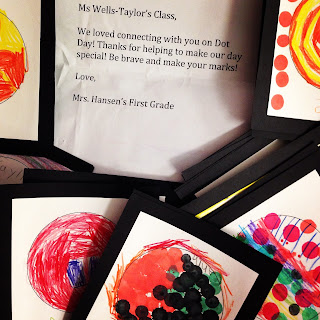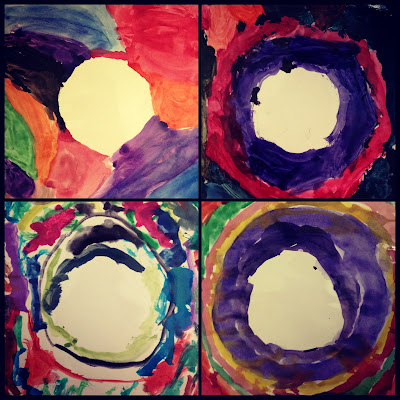Developing my own cannon for First Nations, Metis and Inuit books has taken on a very personal path and reflection. For the past few years at our school we have been fortunate enough to have a lead teacher for First Nations, Metis and Inuit studies in the school. This lead teacher would come into the classroom share information and do activities with the students. I was always present in the classroom and learned along side my students. However, in the Spring of 2016 developing my own personal cannon was thrown into high gear as our province released a new Teaching Quality Practice Standards (TQS) draft. In Alberta, the TQS is the legal document that governs our teaching responsibilities that our employment contract is based upon. This new draft had some very specific points about First Nations, Metis and Inuit knowledge for educators. Many points that most educators in Alberta were not familiar with.
Most specifically:
Applying Foundational Knowledge about First Nations, Métis and Inuit
(5) A teacher develops and applies foundational knowledge about First Nations, Métis and
Inuit for the benefit of all students, and supports the process of reconciliation, by:
(a) understanding the historical, social, economic and political implications of:
• treaties and agreements with First Nations;
• agreements with Métis;
• the legacy of residential schools; and
• the impacts of intergenerational trauma on learner development;
(b) using the programs of study to provide opportunities for all students to develop a
knowledge and understanding of, and respect for, the First Nations, Métis and Inuit;
and
(c) supporting the learning experiences of all students by using resources that accurately
reflect and demonstrate the strength and diversity of First Nations, Métis and Inuit. (Teaching and Leadership Excellence, 2016, p. 6)
With this recent addition to the Teaching Quality Practice Standard, I felt it more important than ever to increase my foundational knowledge about First Nations, Metis and Inuit. At the beginning of September, I decided to add this Teaching Quality Practice Standard to my Professional Growth Plan.
 One of the first books I read was In This Together. This book was an excellent introduction and overview to those who were new to Truth and Reconciliation. It is a collection of fifteen essays from both Indigenous and non-Indigenous individuals that share their thoughts on Canada’s history and how we can move forward with truth and reconciliation. Although this book is intended for adult audiences, it helps the teacher gain a greater understanding of different perspectives.
One of the first books I read was In This Together. This book was an excellent introduction and overview to those who were new to Truth and Reconciliation. It is a collection of fifteen essays from both Indigenous and non-Indigenous individuals that share their thoughts on Canada’s history and how we can move forward with truth and reconciliation. Although this book is intended for adult audiences, it helps the teacher gain a greater understanding of different perspectives.
As I have continued to grow in my foundational knowledge I decided to create a book list of children’s books I could use in my classroom or in future classrooms which will hopefully help my students develop a greater understanding and respect for First Nations, Metis and Inuit. This list is by no means all the books available on First Nations, Metis and Inuit perspectives. It seems more and more books are being published all the time. I am now always on the lookout for new book releases. Initially, when I started looking for books, I felt I wanted to locate books specifically for early elementary. However, not all the books I have curated in this bibliography are for the current grade level I teach. Nonetheless, many can be used for my grade level and all can be used for upper elementary for sure. Throughout the curation of this bibliography, I have been able to read many books that deal with issues of residential schools such as Fatty Legs, Shi-shi-etko, Shin-chi’s Canoe, Secret Path and I am not a number. Ceremonial dances in books like the Jingle Dancer, Peace Dancer and The Drum Calls Softly. Traditions and important symbols such as totem poles in Sometimes I Feel Like a Fox and dream catchers in Brown Eagle, Brown Eagle, What do you see?
With the increase of additional titles on Indigenous peoples as well as the conversations that are now happening in schools and across Canada the hope is this will increase students’ and teachers’ understanding of Truth and Reconciliation. It also provides hope that students will think critically, see diverse backgrounds and continue on their own path of understanding. Finally, it is hoped we will be able to portray a more accurate understanding of Canadian History to our students.
When I Was Eight
Christy Jordan-Fenton & Margaret Pokiak-Fenton
Art by Gabrielle Grimard


Not My Girl
Christy Jordan-Fenton & Margaret Pokiak-Fenton
Art by Gabrielle Grimard


Fatty Legs
Christy Jordan-Fenton & Margaret Pokiak-Fenton
Artwork by Liz Amini-Holmes



Shi-shi-etko
Nicola I. Campbell
Pictures by Kim LaFave


Shin-chi's Canoe
Nicola I. Campbell
Pictures by Kim LaFave



Secret Path
Gord Downie
Artwork by Jeff Lemire


Peace Dancer
Roy Henry Vickers and Robert Budd
Illustrated by Roy Henry Vickers



Brown Eagle, Brown Eagle, What Do You See?
Sandra Samatte
Illustrated by Eric Peters

Jingle Dancer
Cynthia Leitich Smith
Illustrated by Cornelius Van Wright and Ying-Hwa Hu


What's The Most Beautiful Thing You Know About Horses?
Richard Van Camp
Pictures by George Littlechild


The Drum Calls Softly
David Bouchard and Shelley Willier
Paintings by Jim Poitras
Singing and Drumming by Northern Cree


Hiawatha and the Peacemaker
Robbie Robertson
Pictures by David Shannon


I Am Not A Number
Jenny Kay Dupuis and Kathy Kacer
Illustrated by Gillian Newland


The Raven and the Loon
Rachel and Sean Qitsualik-Tinsley
Illustrated by Kim Smith


Sometimes I Feel Like A Fox
Danielle Daniel


Bibliography
Bouchard, D., & Willier, S. (2008). The drum calls softly. Calgary, AB: Red Deer Press.
Campbell, N. I.
(2005). Shi-shi-etko. Toronto, ON:
Groundwood Books.
Campbell, N. I.
(2008). Shin-chi’s canoe. Toronto, ON:
Groundwood Books.
Daniel, D. (2015). Sometimes I feel like a fox. Toronto, ON: Groundwood Books.
Downie, G. (2016). Secret Path. Toronto, ON: Simon &
Schuster.
Dupuis, J. K., &
Kacer, K. (2016). I am not a number.
Toronto, ON: Second Story Press.
Jordan-Fenton, C.,
& Pokiak-Fenton, M. (2010). Fatty
legs. Toronto, ON: Annick Press.
Jordan-Fenton, C.,
& Pokiak-Fenton, M. (2013). When I
was eight. Toronto, ON: University of Toronto Press.
Jordan-Fenton, C.,
& Pokiak-Fenton, M. (2016). Not my
girl. Toronto, ON: University of
Toronto Press.
Metcalfe-Chenail, D.
(2016). In this together fifteen stories
of truth and reconciliation.
Victoria, BC: Brindle and Glass.
Qitsualik-Tinsley, R., & Qitsualik-Tinsley, S. (2013). The raven and the loon. Iqualuit,
Nunavut: Inhabit Media.
Robertson, R. (2015). Hiawatha and the peacemaker. New York, NY:
Abrams Books for
Young Readers.
Samatte, S. (2009). Brown eagle, brown eagle, what do you see?
Winnipeg, MB: Native
Reflections.
Smith, C. L. (2000). Jingle dancer. New York, NY: Morrow
Junior Books.
Teaching and
Leadership Excellence, Alberta Education. (2016, March). Government of
Alberta
Department of Education draft teaching quality standard. Retrieved from
http://www.letsd.ab.ca/documents/general/Teaching%20Quality%20Standard%20
%20Draft%202016%2003%2002.pdf
Van Camp, R. (1998). What's the most beautiful thing you know about horses? San
Franciso, CA: Children's Book Press.
Vickers, R. H., & Budd, R. (2016). Peace dancer. Madeira Park, BC: Harbour Publishing.




























































































